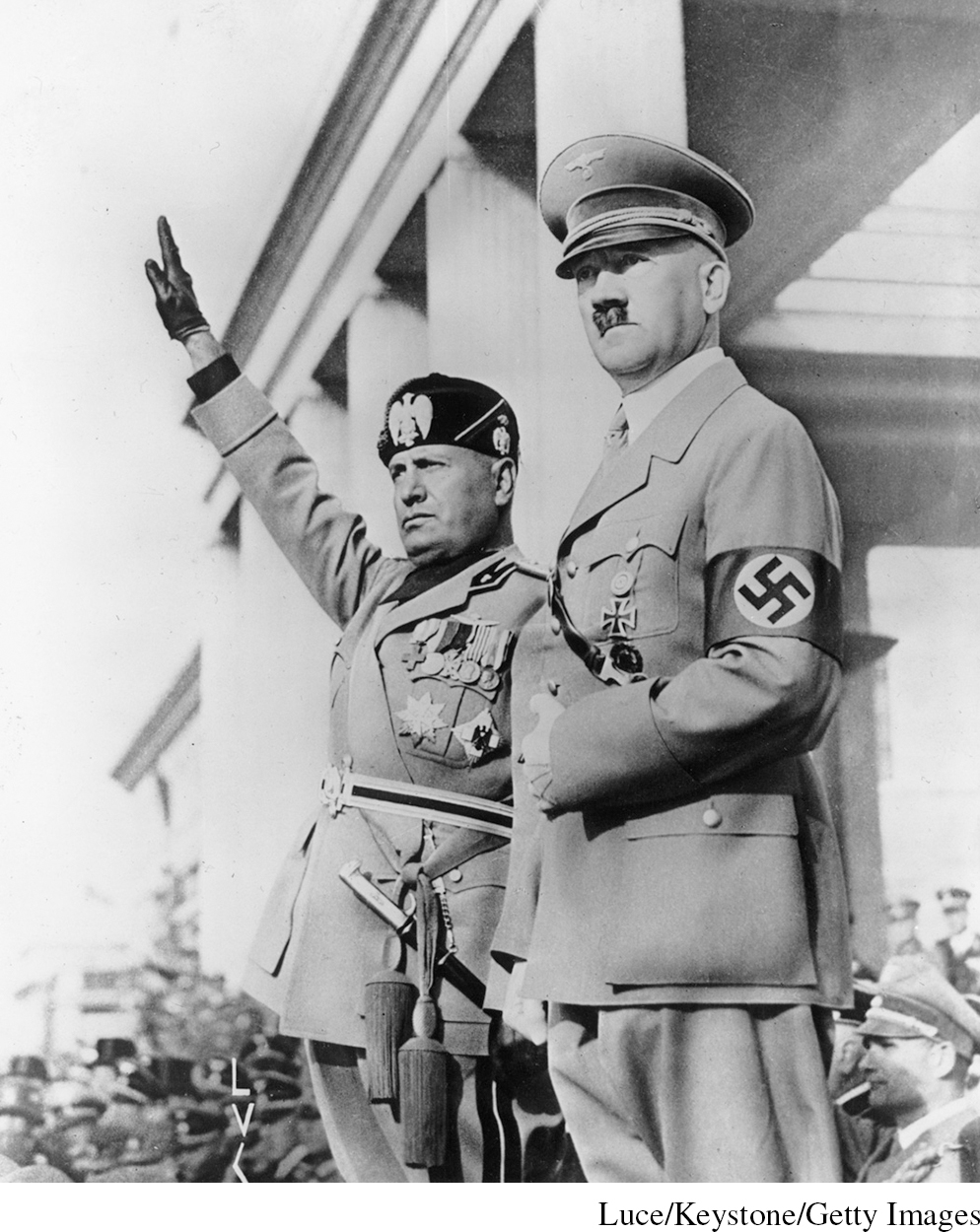The Fascist Alternative in Europe
Between 1919 and 1945, a new political ideology, known as fascism, found expression across much of Europe. At the level of ideas, fascism was intensely nationalistic, seeking to revitalize and purify the nation and to mobilize its people for some grand task. Its spokesmen praised violence against enemies as a renewing force in society, celebrated action rather than reflection, and placed their faith in a charismatic leader. Fascists also bitterly condemned individualism, liberalism, feminism, parliamentary democracy, and communism, all of which, they argued, divided and weakened the nation. In their determination to overthrow existing regimes, they were revolutionary; in their embrace of traditional values and their opposition to much of modern life, however, they were conservative or reactionary.
Change
In what ways did fascism challenge the ideas and practices of European liberalism and democracy?
Such ideas appealed to aggrieved people all across the social spectrum. In the devastation that followed the First World War, the numbers of such people grew substantially. In the aftermath of the Russian Revolution of 1917, some among the middle and upper classes felt the rise of socialism and communism as a dire threat; small-
Small fascist movements appeared in many Western European countries, including France, Great Britain, and the Netherlands, but they had little political impact. More substantial movements took shape in Austria, Hungary, and Romania. In Spain, the rise of a fascist movement led to a bitter civil war (1936–
The fascist alternative took shape first in Italy. That nation had become a unified state only in 1870 and had not yet developed a modern and thoroughly democratic culture. In the early twentieth century, conservative landlords still dominated much of the countryside. Northern Italy, however, had begun to industrialize in the late nineteenth century, generating the characteristic tension between an industrial working class and a substantial middle class. The First World War gave rise to resentful veterans, many of them unemployed, and to patriots who believed that Italy had not gained the territory it deserved from the Treaty of Versailles. During the serious economic downturn after World War I, trade unions, peasant movements, and various communist and socialist parties threatened the established social order with a wave of strikes and land seizures.

Into this setting stepped a charismatic orator and a former journalist with a socialist background, Benito Mussolini (1883–
In Mussolini’s thinking, fascism was resolutely anticommunist—
Mussolini promised his mass following major social reforms, though in practice he concentrated on consolidating the power of the central state. His government suspended democracy and imprisoned, deported, or sometimes executed opponents. Italy’s fascist regime also disbanded independent labor unions and peasant groups as well as all opposing political parties. In economic life, a “corporate state” took shape, at least in theory, in which workers, employers, and various professional groups were organized into “corporations” that were supposed to settle their disagreements and determine economic policy under the supervision of the state.
Culturally, fascists invoked various aspects of traditional Italian life. Though personally an atheist, Mussolini embraced the Catholic culture of Italy in a series of agreements with the Church, known as the Lateran Accords of 1929, which made the Vatican a sovereign state and Catholicism Italy’s national religion. In fascist propaganda, women were portrayed in highly traditional domestic terms, particularly as mothers creating new citizens for the fascist state, with no hint of equality or liberation. Nationalists were delighted when Italy invaded Ethiopia in 1935, avenging the embarrassing defeat that Italians suffered at the hands of Ethiopians in 1896. In the eyes of Mussolini and fascist believers, all of this was the beginning of a “new Roman Empire” that would revitalize Italian society and give it a global mission.